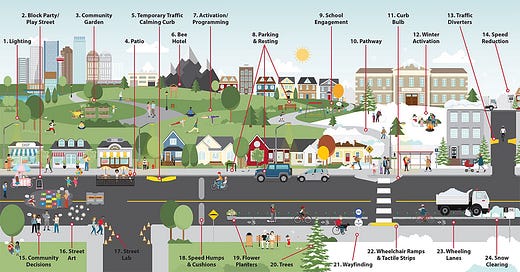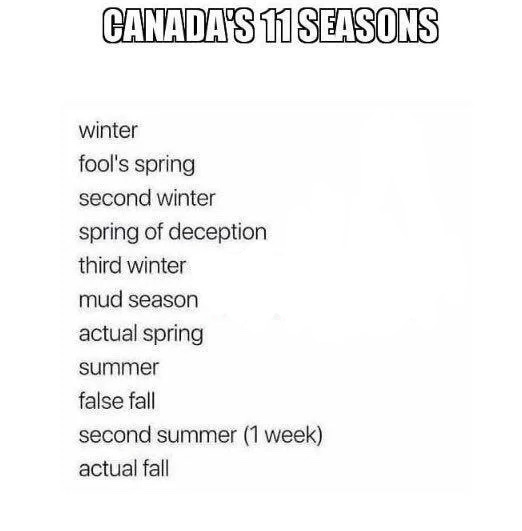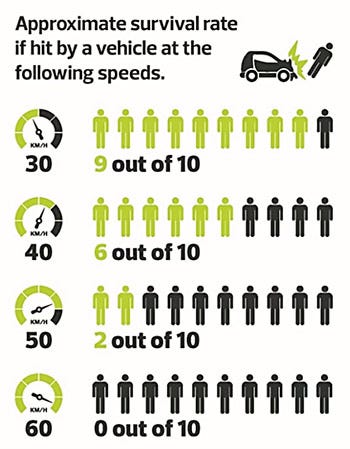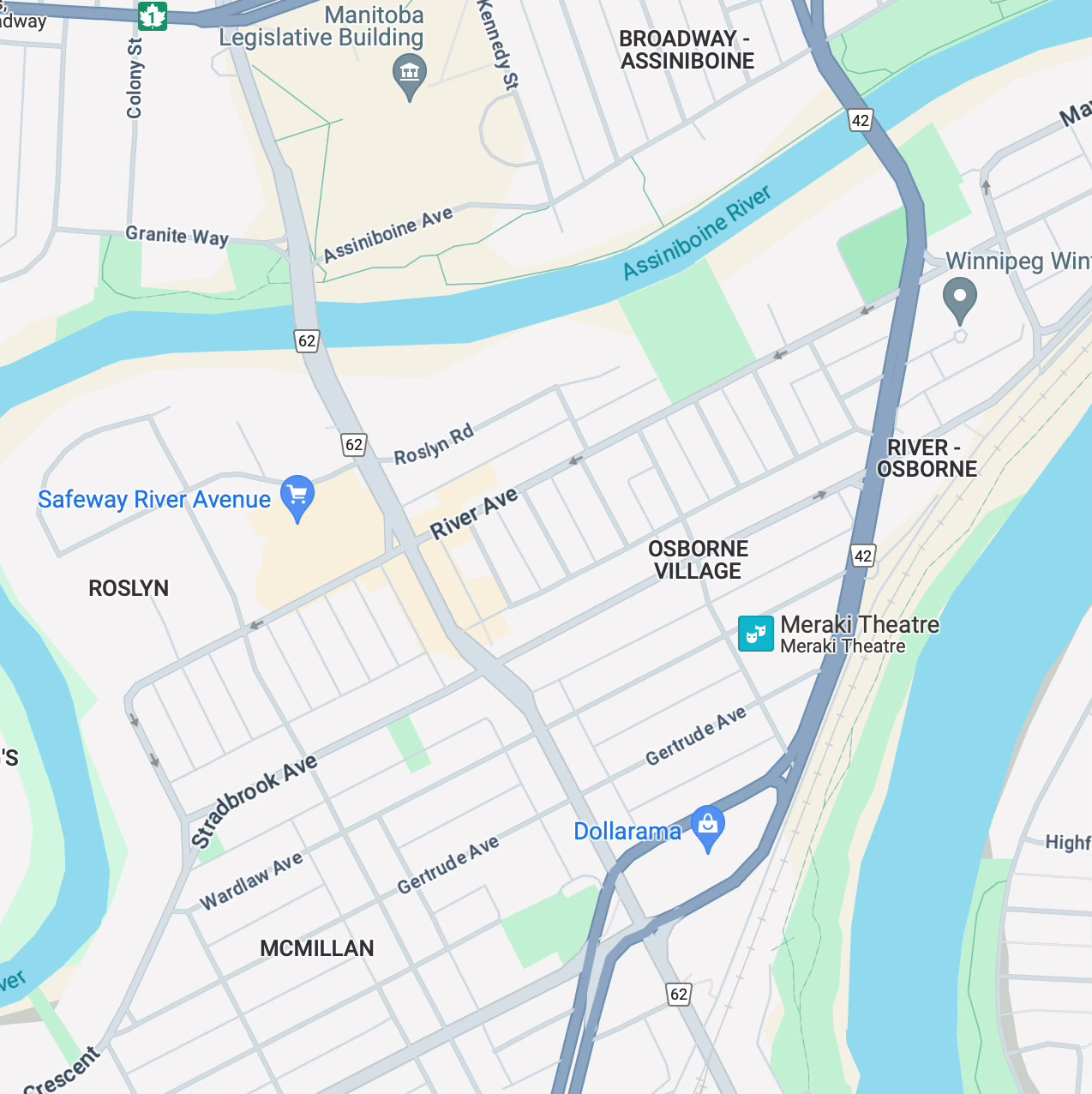Our Streets Should Be For Everyone
Making streets safe for pedestrians and cyclists makes them safe for everyone.
The Grass is Riz…
Spring! Finally! Real Spring.. not Fake Spring, or Spring of Deception.. Actual Spring!
With Actual Spring people are coming out, back onto the sidewalks, yards, and streets. It is a joyous time of year, not only do the plants come out of hibernation but people do to!
The streets in our neighbourhoods, which for several months of the year feel more or less abandoned to cars, are once again alive with people. Kids playing on the sidewalks and yards, gardeners doing gardening things, and a lot more people out on their bikes.
If Not Safety First, then Safety Eventually?
People out and about means we are once again focussed on how to make our streets safer for people not in cars. The City of Winnipeg will be rolling out their “seasonal bike routes” making 4 streets safer for cyclists May to Thanksgiving. This is on top of the “Neighbourhood Greenway” pilot where sections of 14 streets have the speed reduced to 30km/hr year round.
The main ingredient to making these select few streets safer is reducing the speed limit. This the most obvious way to make a street safer for pedestrians and cyclists. Changing a sign is also the easiest thing to do.
Dropping speed limits in residential neighbourhoods to a survivable speed seems like a no-brainer. It is very much the low hanging fruit of what can be done. Some cities have made the change, most have not. Winnipeg has a great advocacy organization for this change, Safe Speeds Winnipeg that works very hard advocating for this change.
It is hard work convincing drivers and politicians to lower residential speed limits. After all, most North American cities have been built around the personal automobile. For over 75 years, our cities have been designed with the intent that everyone will drive everywhere. When you take all parts of a city that is dedicated to cars: roads, parking lots, driveways, garages, car dealerships, gas stations, that amount of space adds up to about 50% of the urban real estate. Car dependent cities have wide streets, lack of sidewalks, vast expanses of parking.
Add into the car landscape speed limits have been the same since 1934. It was in 1934 that the UK imposed a speed limit of 30mph in residential areas, and Canada and the US pretty much followed along from there. Of note the weight of the average 4-door sedan in 1935 was 2500 lbs. The weight of the average F-150 in 2024 is close to 5,000 lbs. Residential speed limits have been the same since cars weighed half of what they weigh now.
Built For Comfort (and speed)
Current road standards such as lane width, signage, turning radii, trees, and a host of other determinants have been set to keep cars safe. As cars are faster and heavier, they need more room to be safe. A vehicle with greater mass needs more stopping room, and that driver needs fewer distractions.
The result is wide, generally straight, open streets and roads. Fewer signs and trees to clutter up the visual field of the driver. We prioritize the driver by making crossing the street on foot a crime, jaywalking, when not at a marked intersection. We reduce the number of crossing points for pedestrians. We reduce or eliminate sidewalks.
All those “road standards”, in place to make it safer for a driver, have a far greater impact on driving speed than speed limits. No matter the set speed limit, our streets and roads are still designed for faster speeds. Streets are wide, turning radii are generous (my personal bugaboo), the visual field is open, affecting speed far more than speed limits. We all do it when we drive. We can’t help it. We drive to the condition rather than the speed limit.
An example of that is right here in Winnipeg in Osborne Village, on Osborne Street heading north. The speed limit is consistently 50Kmh along Osborne. Driving through Osborne Village, the lanes are narrow, building faces are right along the sidewalk, and there are people and other cars around. It is a visually cluttered and complex environment. As a result, drivers are forced to pay more attention, and drive the speed limit or slower.
Once you clear Roslyn Rd heading north and get to the bridge, the visual environment opens up. The lanes become wider, there are no buildings along the street, pedestrians are separated by a barrier; the visual filed is wide open. Drivers, naturally, speed up. I regularly glance at my speed on the bridge and I’m going at least 60Kmh, with traffic going past me. The speed limit did not change in that half block, but the conditions did. I subconsciously sped up, and the rest of the traffic did as well.
Safe for Everyone
This is but one example among many of how the design of a road and the environment around the road are incredibly important for addressing speeding and having an urban environment that keeps people safe, all people, not just drivers. The historic focus of our streets and roads is to work to make them safe for drivers, and then do various interventions to try to make them safer for anyone not encased in tons of steel. Our goal, rather, should be to make our roads safe for all users, not simply safer for some.
So, in the broader picture, short of completely redesigning our existing streets, we look for immediate solutions on an ad hoc basis. We have a problem intersection, we look for a band aid solution to make it better. We traffic calm streets, and we fight for lower speed limits to make it safer for pedestrians and cyclists.
Our approach to addressing the problems in our car focused and car dependent urban environment so far has been very limited, and contentious every step of the way. This limited tool box contains basic traffic calming tools such as speed bumps, bump outs, stop signs, street closures, and crosswalks. We have recently added lower speed limits to that tool box.
These are all important measures to make the road safer for vulnerable users (the euphemism for pedestrians, cyclists and children). Realistically, we are not going to redesign the thousands of kilometres of existing roads and streets to take all users into consideration. While we work to have new road design be safe for all users, we need to settle to make existing roads safer for some.
A Few Things We Can Do
Beyond the standard traffic calming and speed reductions, there are other interventions we should be considering for our streets. Some are obvious, some are more difficult, and some are about re-adjusting the transportation hierarchy. All are about making sure that all users are considered, not only cars.
Eliminate “right on red”
Drivers don’t stop at red lights when they are turning right, even though it is still a “stop then turn”. Drivers seem to consider the right-on-red as a yield before turning. Unfortunately, that means when turning right at a red light, and slowing down rather than stopping, drivers are looking to their left to see what traffic is coming. Drivers are not looking to the right to see what pedestrians are there or what cyclists are coming. Right-On-Red creates a situation where the car driver is looking in the complete wrong direction for pedestrian and cyclist safety.
Lead on Green
Give pedestrian and cyclists a 3-second lead on every green light. This is currently done at a few intersections in Winnipeg, such as Maryland & Westminster, and makes a huge difference, with no impact on car travel whatsoever. That 3 second lead allows pedestrians and cyclists to get off the sidewalk and get into the visual field of the driver.
No More Begging!
Eliminate beg buttons. Yeah, pedestrians shouldn’t have to wait for another light cycle if they just miss getting there to push the button, or, as I have seen so many times, don’t know they need to push the button to be allowed to cross in the first place. It creates unneeded conflict and reinforces a user hierarchy.
More Crosswalks
Crossing many collectors can be a challenge for a pedestrian as traffic lights are few and far between (to help with car traffic flow). This can mean having to walk kilometres (yes, kilometres!!!) to get from one side of the street to the other. That either induces or encourages dangerous crossing attempts. This is a huge problem on our many stroads, but not just limited to them.
Eliminate Slip Lanes
Eliminate slip lanes where there are pedestrians! Seriously.. slip lanes are only about making sure cars don’t have to slow down. They aren’t about anything else. They needlessly put pedestrians, cyclists, and other users at risk. They create conflict zones that are high risk for everyone.
Move Traffic Signals
Move traffic signals from the far side to the near side. This will force drivers to stop a little further away at an intersection. No more creeping into the crosswalk, because they won’t be able to see the traffic signal. Those extra couple of metres of buffer for pedestrians will make a huge difference with no impact on drivers.
Street Signs
Too often on one way streets, street signs are aligned for drivers. The names of the streets are not visible to anyone traveling counter flow, such as a pedestrian. It is nuts that you have to cross the street to see what street it was you just crossed. Walk through downtown, with its plethora of one way streets, and notice how many streets are not identifiable for a pedestrian. Let people other than drivers know where they are!
Reduce Turning Radii
I feel like I could write a whole screed about this one (and I may someday!). Not a problem in older, pre-war neighbourhoods, but a huge problem in our street design for the past 75 years. When we “traffic calm” a corner with bump outs and the like, to compensate for a turning radii that is just too big, we are retrofitting the intersection to be what it was like 75 years ago. Once again, what’s old is new again.
Clutter the Visual Environment
More street trees, street furniture, more people. We have historically worked to de-clutter the visual field for drivers to make it safer for them. This has led to the urban environment that is unsafe for all other users. We cut down trees and don’t replace them because they might block the view for a driver. We need to start cluttering up the visual field so that drivers will not feel as comfortable driving at unsafe speeds for others.
Make People the Focus
I haven’t talked at all about things we all know work, such narrowing car travel lanes, wider sidewalks, separated bike lanes, diagonal parking, etc. I am sure there are other ideas: I saw an example of speed tables used on either side of a crosswalk that looked like a good idea. Ottawa is installing some continuous sidewalks that also seem like a positive intervention. Scramble intersections can be a great addition, and are widely used in Montreal and Quebec City.
We need to do a lot more. Pedestrian and cycling injuries and deaths are soaring. Our “whack a mole” approach to traffic calming minor interventions isn’t working. We need to expand our approach and our tools.
People need to be the basic component that we build communities around, not the car. Rather than having a specifically car-centric environment and trying to make it a bit safer for people, we need to plan for people being safe.
The status quo is no longer tenable, environmentally, fiscally, and socially. We need to imagine a better future, and act on it.
Brian







